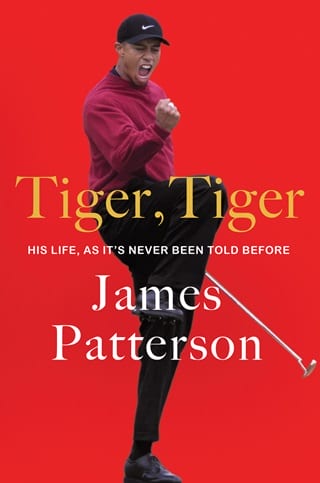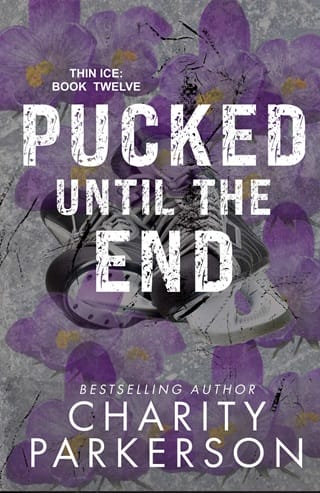Chapter 17
The 95th U.S. Open
Shinnecock Hills Golf Club
Southampton, New York
June 15–18, 1995
As U.S. Amateur champion, Tiger’s qualified for the United States Golf Association’s U.S. Open. It’s unusual for an amateur to issue a pre-tournament press release, but the media’s drumbeat of personal questions will not be silenced. “Yes I am the product of two great cultures,” his statement reads, “one African-American and the other Asian… The bottom line is that I am an American. And proud of it!”
Shinnecock Hills Golf Club, the oldest links course in America, is covered in high, thick grass that makes for especially heavy rough. Most players will be teeing off with a driver. “Hitting my driver,” Tiger says, “you don’t have much room for error out there” on the long 6,944-yard course. His chosen club is the 1-iron.
The tournament gets underway with a field of 156 golfers. Tiger shoots a 4-over 74 in the first round, and on Friday he runs into trouble with the rough. On the 3rd, he chooses a wedge to free his ball from the dense grass. He swings and feels a twinge in his wrist. It’s sprained. He tapes the injury and continues playing—only to again hit into the rough on the 5th. “I couldn’t hold on to the club with the normal grip,” Tiger says.
The injury forces him to withdraw on the 6th.
“I’m kind of bummed out,” Tiger says. “I felt like I was playing good enough to make the cut. But that’s what happens when you hit the ball in the long grass.”
On the Old Course at St Andrews Links, in Fife, Scotland, Arnold Palmer tips his visor. He’s standing on the stone Swilcan Bridge, between the 1st and 18th fairways, where adoring crowds cheer the soon-to-be-sixty-six-year-old golfer—the first to earn more than $1 million on the PGA Tour.
Unfortunately, windy conditions on the iconic Old Course keep Palmer, the 1961 and 1962 winner of the prized Claret Jug, from making the cut.
On July 23, 1995, fellow American John Daly triumphs after a four-hole playoff against Italian Costantino Rocca. “To win here at St. Andrews is a lifetime dream for anybody,” Daly says. “And mine’s come true today.”
Not Tiger’s. While he makes his second cut at a major championship, he finishes sixty-eighth.
“Butch, how far away am I?” Tiger asks his coach. “When will I be that good?”
“You just have to keep working,” Harmon says. “You’ve got so much to learn.”
As Arnold Palmer says at the Celebration of Champions that week, “If you are going to be a champion, you couldn’t be a champion without playing in The Open and hopefully winning The Open.”
Tiger now practices even harder than ever. Okay, let’s see who can hit it closer to that flag off one foot. Okay, now closing your eyes. Okay, now using a 7-iron.
He challenges himself on the distance control that eluded him on the parkland course at Augusta National. The widely voiced criticism—Tiger Woods hits it far, but he’s out of control—stings. He also perfects the range of shots required to win on a links-style course.
Back in Rhode Island, the Newport Country Club, host of the 1995 U.S. Amateur Championship, is another course where windy conditions come into play. Harmon coaches Tiger on the knockdown—or punch—saying, “There are holes on the golf course where you’re going to need that shot.”
In 1893, Theodore A. Havemeyer, the United States Golf Association’s first president and vice president of the American Sugar Refining Company, persuaded America’s most influential businessmen and sportsmen to fund a golf club on Rocky Farm, a 140-acre patch of land overlooking the Atlantic Ocean. Two years later, it hosted both the first U.S. Amateur and the first U.S. Open. The New York Times praised its Louis XIII–style clubhouse as “supreme for magnificence among golf clubs, not only in America, but the world.”
The course—with its St Andrews–inspired design, unirrigated fairways, and firm and fast conditions—is difficult to play, its rolling ground too windswept for tree cover. “Going to Scotland really helped me understand courses like this,” Tiger tells the Baltimore Sun. “It makes it all ‘feel,’ and you have to be creative with some shots. I like playing that way.”
Butch Harmon and Earl walk the course alongside Tiger as his sports psychologist and caddie, Jay Brunza, gauges the wind blowing in from the ocean, gusting to thirty miles an hour. Regulation play progresses to a thirty-six-hole final between Tiger and George “Buddy” Marucci, a forty-three-year-old Mercedes-Benz dealer from Pennsylvania, making his first advancement past the top sixteen in the amateurs.
By the 36th hole, with the centennial U.S. Amateur championship likely resting on his next shot, Tiger selects an 8-iron.
“I wouldn’t be surprised if he knocks it a foot from the hole,” ESPN commentator Johnny Miller predicts. He’s wrong.
Tiger knocks it eighteen inches from the cup but still has a tap-in birdie. He secures the Havemeyer Trophy and his second U.S. Amateur Championship.
He’s only the ninth player in the tournament’s one-hundred-year history to manage consecutive wins.
Marucci, the runner-up, calls Tiger’s winning shot “spectacular” and “the sign of a true champion.” He tells the Los Angeles Times, “I can live with losing to Tiger.”
Earl fills the trophy with champagne and makes a toast. “To my son, Tiger. One of the greatest golfers in the history of the United States.” He also declares, “Before he’s through, my son will win fourteen major championships.”
“My place in history, I don’t really care about that,” Tiger says when asked what his victory means for the record books. “Hey, I’m still a kid. I’m only nineteen.”
For Tiger and Harmon, the future can wait. They can’t stop talking about the miraculous events of today. “That shot at 18—damn! I didn’t have it last year, I didn’t have it at Augusta,” Tiger tells Sports Illustrated. Harmon agrees, saying that before, Tiger “probably would have hit nine-iron and rolled it off the green.”
“I spent hours and hours on the range,” Tiger tells the Los Angeles Times, “and it paid off on the 18th hole.”
 Fullepub
Fullepub 



